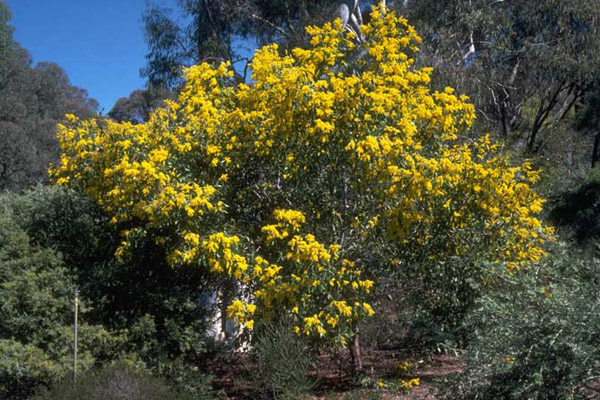General Description:
Golden wattle is Australia’s national floral emblem. It was unofficially recognised as the emblem before being officially proclaimed on 1 September 1988. It is a a shrub or small tree 5-8 metres high. Like most members of the genus, the mature plant does not have true leaves but has leaf-like flattened stems called phyllodes. In A.pycnantha the phyllodes are lance-shaped (often curved) and between 5 and 20 cm long. The bright yellow flowers occur in the axils of the phyllodes as 20 or more globular-shaped clusters. Flowering is mainly in late winter and spring.
Acacia pycnantha is popular in cultivation but is best suited to temperate areas. It is quick growing and will often flower in the second season after sowing. It is suited to a wide range of soil types, provided they are not waterlogged, and a position in full sun or light shade. The species is tolerant of at least moderate frosts and can be grown in coastal districts but is best away from front line exposure to salt spray.
The species has become an environmental weed in some places (eg. Western Australia, California and particularly South Africa where it is a serious pest). It has also naturalised in the NSW Tablelands and in Tasmania so care should be exercised in planting A.pycnantha in areas close to bushland.
Propagation is relatively easy by normal seed raising methods following pretreatment by soaking in boiling water or by scarification. Propagation from cuttings may be successful but is not often used.

Acacia pycnantha
Photo: Australian National Botanic Gardens

Acacia pycnantha
Photo: Australian National Botanic Gardens
 Australian Native Plants Society (Australia)
Australian Native Plants Society (Australia)